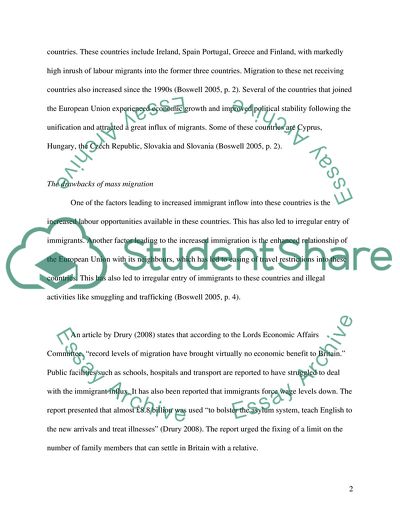Cite this document
(“Mass Migration in Europe - a Threat or Benefit to Host Countries Coursework - 1”, n.d.)
Mass Migration in Europe - a Threat or Benefit to Host Countries Coursework - 1. Retrieved from https://studentshare.org/social-science/1721323-is-mass-migration-more-of-a-threat-or-a-benefit-to-european-host-countries
Mass Migration in Europe - a Threat or Benefit to Host Countries Coursework - 1. Retrieved from https://studentshare.org/social-science/1721323-is-mass-migration-more-of-a-threat-or-a-benefit-to-european-host-countries
(Mass Migration in Europe - a Threat or Benefit to Host Countries Coursework - 1)
Mass Migration in Europe - a Threat or Benefit to Host Countries Coursework - 1. https://studentshare.org/social-science/1721323-is-mass-migration-more-of-a-threat-or-a-benefit-to-european-host-countries.
Mass Migration in Europe - a Threat or Benefit to Host Countries Coursework - 1. https://studentshare.org/social-science/1721323-is-mass-migration-more-of-a-threat-or-a-benefit-to-european-host-countries.
“Mass Migration in Europe - a Threat or Benefit to Host Countries Coursework - 1”, n.d. https://studentshare.org/social-science/1721323-is-mass-migration-more-of-a-threat-or-a-benefit-to-european-host-countries.


